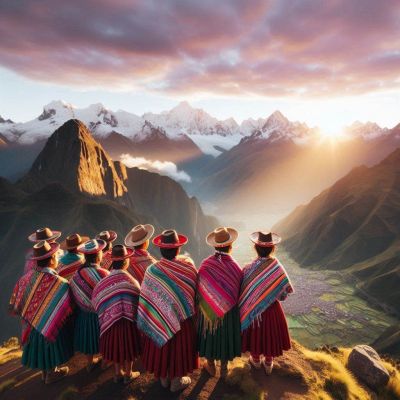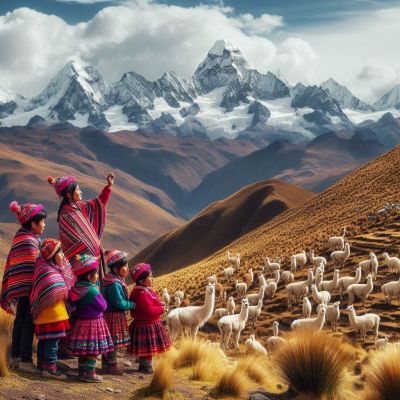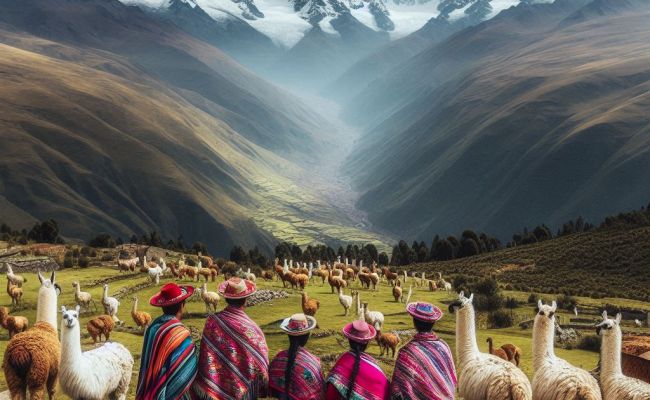The Quechua people are indigenous to South America’s Andes and live largely in Peru, Ecuador, Bolivia, Colombia, Argentina, and Chile. They are known for their rich cultural legacy, fortitude, and close affinity to the Andean environment.
The Quechua language, spoken by millions, is an important cultural emblem and unifying force among Quechua people. Traditionally agrarian, they grow staple crops such as potatoes, maize, and quinoa in the Andes’ difficult high-altitude environment.
Their history encompasses both the Inca Empire’s legacy and current efforts to preserve their culture in the face of modern influences. Today, the Quechua people uphold their traditions while negotiating modern life in the Andes and elsewhere.
History
The Quechua people of the Andes have a long history that dates back to ancient civilizations, most notably the Inca Empire of the 15th and early 16th centuries.
Before the Inca conquest, Quechua-speaking populations such as the Huanca, Chanka, and Kañari lived in the Andes of Peru, Ecuador, Bolivia, Colombia, Chile, and Argentina.
The Inca Empire, led by Pachacuti and Huayna Capac, unified these communities, spreading the Quechua language and culture throughout wide territories.
The early sixteenth century saw a huge shift in Spanish colonization, with Francisco Pizarro’s conquest of the Inca Empire in 1533 resulting in the eradication of indigenous cultures such as Quechua.
Despite this, the Quechua language and customs have survived and are currently seeing a rebirth in cultural pride and recognition, thanks to ongoing efforts to preserve and revitalize Quechua culture in Peru, Bolivia, and Ecuador, aided by organizations such as ECUARUNARI.

Culture
The Quechua people, who are ethnically and linguistically varied, have strong cultural ties to other Andean Indigenous tribes like the Aymara.
Local communities and traditional economic practices like agriculture and pastoralism, historically structured under communal ownership (ayllus), form the core of their identity. Colonization and subsequent land grabs spurred opposition, including major uprisings in 1780–1781.
In the mid-twentieth century, agrarian reforms in Bolivia and Peru sought to redistribute land to Indigenous groups, affecting traditional structures while conserving cultural practices in remote locations such as the Q’ero.
Today, land rights continue to be a critical issue, as evidenced by successful campaigns in Ecuador and ongoing issues arising from mining and urbanization that threaten the history and language of Quechua.
Despite these constraints, Quechua people maintain their cultural resilience and ancestral customs in the face of an ever-changing Andean landscape.
Language
Around 5.1 million people in Peru, 1.8 million in Bolivia, 2.5 million in Ecuador, and smaller populations in Chile, Argentina, and Brazil speak Quechua. Dialects can differ greatly, making mutual comprehension difficult at times.
The Incas and their opponents, such as the Huanca, Chanka, and Ka’ari people, spoke Quechua in the past. In 1969, Quechua received official recognition as Peru’s second language.
Quechua speakers have made efforts toward nation-building, particularly in Ecuador, through the umbrella organization ECUARUNARI. Some argue for a single “Quechua Nation” notion, which implies a cohesive identity that crosses national borders across Latin America.

Foods and crops
The Quechua people farm and consume a wide variety of foods, reflecting their long agricultural traditions in the Andes. They are well-known for domesticating and producing a wide range of potato cultivars, which are important not only for food but also for medicine. However, climate change threatens these traditional crops, causing the Quechua to begin conservation and adaptation initiatives. Quinoa, another main crop, has important cultural and nutritional value for the Quechua.
Ch’arki, a dried meat similar to jerky, was traditionally made from llama meat but is now also created using horse or cattle. Pachamanca is a Quechua-based cooking style that involves pit-cooking various meats, such as chicken, beef, and hog, as well as potatoes, sweet potatoes, and other vegetables. They rear guinea pigs for meat, thereby enhancing their culinary diversity. Quechua diets also include llamas and alpacas, as well as beans, barley, hot peppers, coriander, and peanuts, which highlight their rich culinary tradition in the face of changing environmental conditions.
